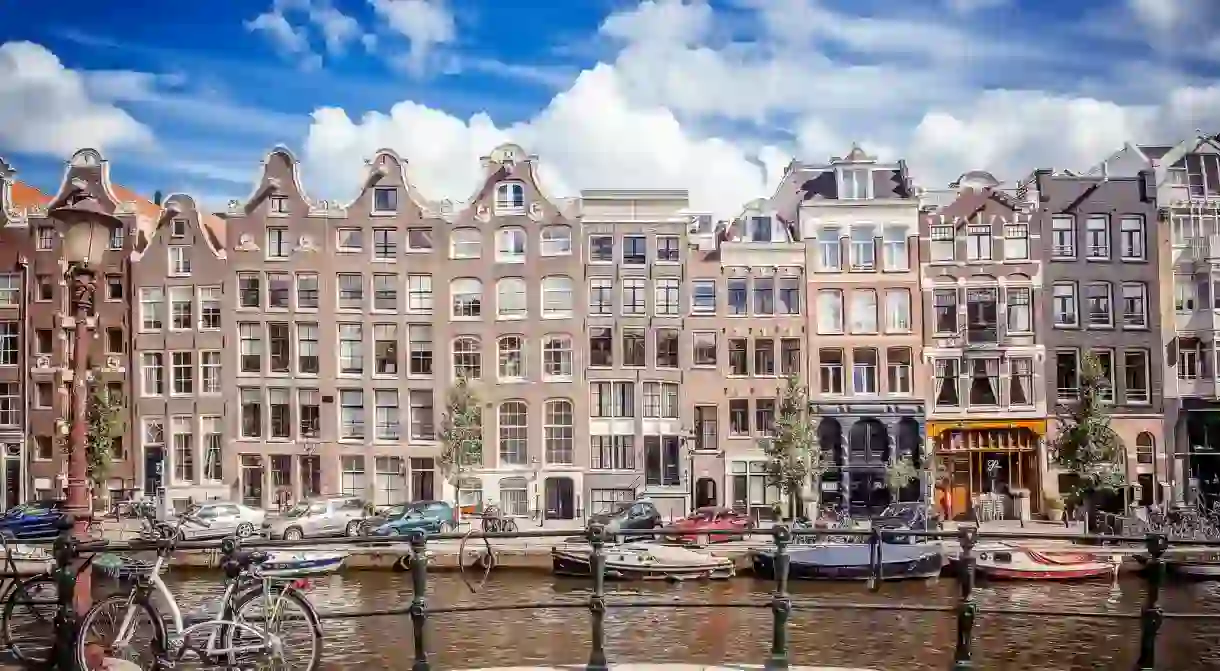The Best Things To Do In Amsterdam For Free

While it certainly isn’t the cheapest destination in Europe, there are plenty of free cultural attractions in Amsterdam, including the city’s famous floating flower market, one of the largest parks in the Netherlands, and a charming plaza that looks onto Artis Zoo’s flamingo enclosure. Here’s a roundup of the best places to visit in Amsterdam that are totally free of charge.
Check out the Flamingoes at Artisplein
Zoo

This public plaza runs alongside the northern side of Amsterdam’s ARTIS Zoo and serves as Café Restaurant de Plantage’s terrace. There are seats and tables arranged on Artisplein from the morning till night and it is possible to order drinks and food from Café Restaurant Plantage while lounging on the plaza. As the flamingo and spoonbill enclosures are located next to the plaza, visitors to Artisplein can watch these birds while enjoying beer, coffee or other refreshments. The plaza also features a long racetrack-like fountain that spurts steam and water.
Catch a free concert at the Concertgebouw
Music Venue

Classical music in Amsterdam revolves around the Concertbebouw. This beautiful, neo-classic building is located on the eastern side of Museumplein and looks directly onto the Rijksmuseum. It is considered to be one of the finest concert venues in the world and the whole building was specifically designed for orchestral acoustics. Once a week, the Concertgebouw holds a free lunchtime concert that often includes performances from Amsterdam’s leading classical musicians.
Stop and smell the flowers at Bloemenmarkt
Market

The world’s only floating flower market is moored to the southern banks of Singel canal in Amsterdam. This unique attraction has existed since the mid-19th century and was built on the water in order to make it easier for flower traders to move their wares through Amsterdam’s canals. Today, the market features around 15 individual stalls, mounted on barges, that sell a whole host of products related to horticulture, such as ready-to-plant tulip bulbs, fresh bouquets of flowers and garden ornaments.
Climb to the top of Amsterdam Central Library
Library

While Amsterdam’s notoriously flat geography might make it an ideal city for cycling, it also means that it is quite difficult to find a decent vantage point. Fortunately, there are several large buildings dotted around the city that offer amazing views over its winding canals and picturesque neighbourhoods. Amsterdam’s central public library is among the tallest buildings in the city centre and is free to enter every day of the week. On clear days, many parts of Amsterdam are visible from its upper levels, including the bohemian quarter de Pijp and trendy Jordaan.
Check out Dappermarkt
Market

Discover NDSM-Wharf
Park

Explore Amsterdamse Bos
Park

Amsterdam’s biggest recreation grounds, Amsterdamse Bos, is roughly three times larger than New York’s Central Park and has ample space for many outdoor activities including hiking, cycling, swimming and boating. The park is located in Amsterdam’s southernmost suburbs and features many different types of terrains, ranging from lakeside beaches to pristine woodlands. There are several other sights located around the park such as the open-air theatre which hosts shows from spring until early autumn or Geitenboerderij Ridammerhoeve – a rustic farm where visitors can pet and feed dozens of baby goats. Though it is slightly further afield than other parks in Amsterdam, it is easy enough to access Amsterdamse Bos by bike or public transport (for example, tramline 16 or 24 from Centraal Station to VU Medisch Centrum).
Delve into the city's history at Amsterdam City Archives
Museum

Amsterdam’s municipality keeps its archives safe inside a former bank, called de Bazel, which is recognised among the most complete examples of Dutch Brick Expressionism in the city. The institute’s permanent exhibition is housed inside the building’s vault and is open to the public. Its collection includes the scolding document that banished the philosopher Baruch Spinoza from Amsterdam’s Jewish community, and a police report concerning Anne Frank’s missing bicycle. Each of these relics provides invaluable insights into Amsterdam’s history and paints a vivid picture of the city’s past. The archives also feature a peaceful café that serves lunchtime meals and another gallery space that hosts temporary exhibitions dedicated to specific aspects of Amsterdam’s history.













